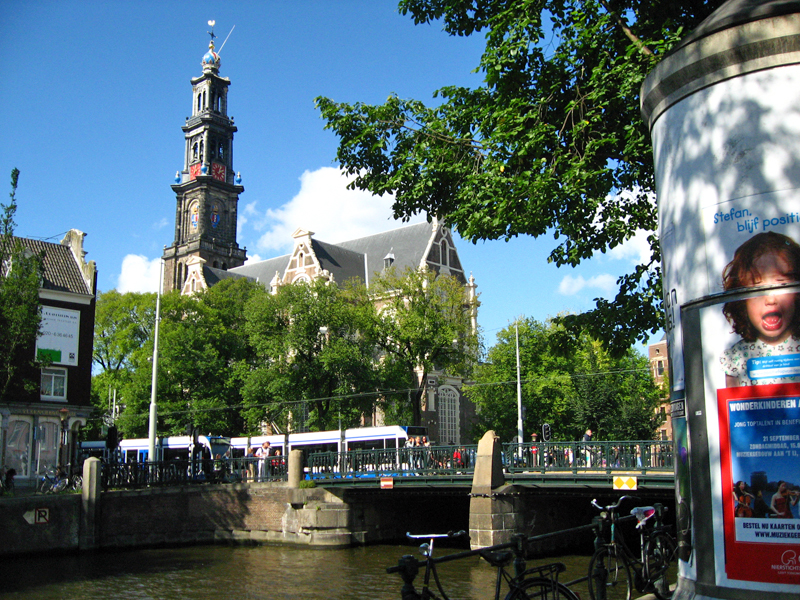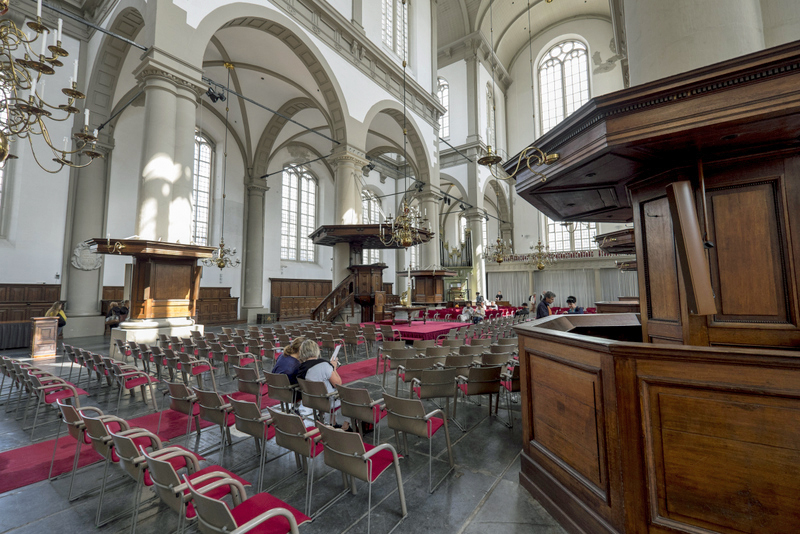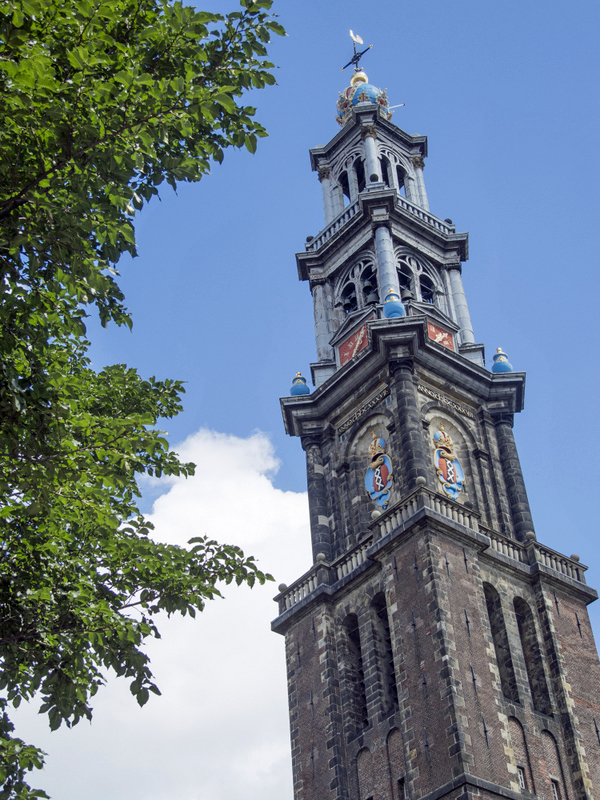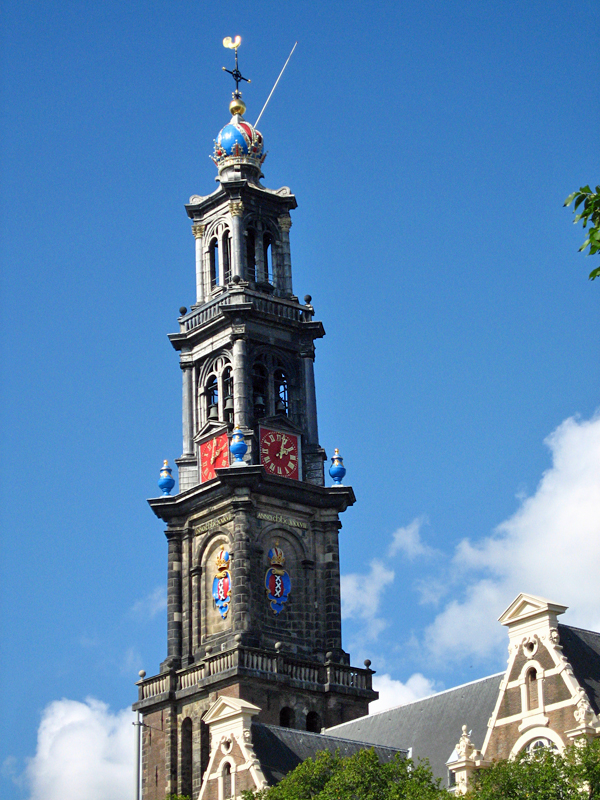Westerkerk and Anne Frank
Westerkerk and Anne Frank are intrinsically connected. She mentions the chimes of Westerkerk in her diary entry of 11 July 1942. Westerkerk is a relatively young church as it was built between 1620 and 1631. Late 16th and early 17th century Amsterdam expanded and homes along the newly dug canals were built for the growing population of the city. Not only houses were needed also churches. Westerkerk became the showcase Protestant church for wealthy Amsterdam citizens who lived along Herengracht. Today, Westerkerk is the main gathering place of the Dutch Reformed Community of Amsterdam.

Westerkerk: The Church
Westerkerk is bare and plain. This is exactly what the Calvinist congregation in Amsterdam wanted the church to be. The only features to note are the tall windows, the soaring columns and the wooden pulpit. Thirty-six tall windows bring in the light of God. At the far end of the church is the original organ whose panels are decorated with biblical scenes. When Westerkerk was built, it was the largest church in the Netherlands. It is 58m long, 28m wide and 29m in height. The vault is constructed of wood because Amsterdam’s marshy soil would not allow the use of heavy stone.
The Architects of Westerkerk
Hendrick de Keyser designed the church. He made it into easy job as he re-used his design of the Zuiderkerk but increased the scale. During the construction works, de Keyser died and another architect, Jacob van Campen, finished the job. He added the square bell tower. Although it looks elegant, De Keyser would never have approved of it. He would most likely have designed a hexagonal or octagonal spire.
The Bell Tower
Westerkerk clock tower soars 85m up in the sky and is one of Amsterdam’s tallest building. The bridal-cake-shaped tower is topped by the imperial crown of Habsburg Emperor Maximillian and shows the Andreas Cross, a triple cross. The tourist industry has embraced these three crosses as their logo.

Climbing the Bell Tower
Climb the 186 steps up the bell tower for a panoramic view. On the way up, you will pass the chamber where watchmen would keep a look-out for fires. You will also pass the bell ringing equipment and the bells themselves. The tall spire sways three centimeter in a good breeze, but it is nothing to worry about.
The tour of the tower runs every thirty minutes from 1 April to 31 October and involves climbing incredibly narrow staircases, some more like ladders. Only six people at a time are allowed to participate in each tour. Westertoren is open from Monday to Saturday and closed on Sunday. The first tour starts at 10 in the morning.
The Chimes of the Church
The chimes of Westerkerk reverberate across Prinsengracht canal and then the sound ebbs away. This musical intermezzo reminds us of what Anne Frank wrote in her diary on 11th July 1942, when she and her family had been in hiding for only three days. Het Achterhuis or the Annex where the family spent almost two years in hiding was right behind Westerkerk.
‘Father and mother can’t get used to the chiming of Westertoren clock, which tells us the time every quarter of an hour. Not me, I liked it from the start. It sounds reassuring, especially at night.’
The Grave of Rembrandt
The church floor is a carpet of graves, most of them only with a number. Some graves are adorned with carvings, but only rich people could afford this. The Dutch painter Rembrandt was buried in this church in a paupers’ tomb. Although his death was recorded in the church register, the actual spot was not. It is not likely that his bones are still in the church because it was customary to clear paupers’ tombs after twenty years to make place for others. More about Rembrandt
Address: Westerkerk, Prinsengracht 282, Amsterdam
Opening hours: daily 11.00-15.00. On Sundays only for worship
Religious service on Sunday morning starts at 10.30. The church hosts classical music concerts. Go to the Church website for the programme.
Next article: Skinny Bridge Famous Bridge in Amsterdam
photo credit Marianne Crone & Albert van den Boomen





